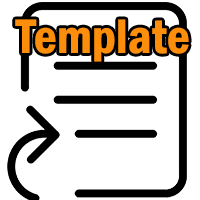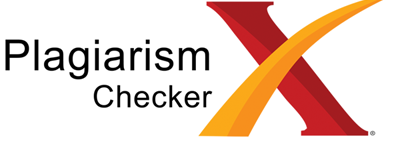Author Guidelines
Journal of Environment and Management (JEM) only publishes articles have not been published and not in the process to publish in other scientific periodicals. The publication in JEM of articles already printed in other journals is entirely the responsibility of the author(s).
Manuscript Submission
Journal of Environment and Management accepts research papers, reviews and short communications written in either Bahasa Indonesia or English. Authors should refer to the instructions below when preparing their manuscripts. Research papers should be concise, focused on new results and data. It should be in 5000-7000 words length. They should contain about 10-30 about references. Reviews should be overview articles of recent advances in the research of selected topics. The structure of review papers should follow the instructions below, except that there is no need to have “Material and Methods”, “Results” and Discussion” sections. The length of review papers may vary according to the importance of the material. They should contain more than 15 references. Short Communications should be short reports of original studies of limited scope and no longer than about 1500 words length.
Manuscript is submitted to:
Editor of Journal of Environment and Management
Program Pascasarjana Universitas Palangka Raya Kampus UPR Tunjung Nyaho Jl. Yos Sudarso
Palangka Raya (73111). Telepon/Fax: (0536) 3230789
Email: editor.jurnal@pasca.upr.ac.id
Manuscript Format
1. Manuscript is written in 11 point Segoe UI font 1.5 space in A4 paper.
2. Margins of all four sides are 2.5 cm
3. Page numbers are located at the right bottom
4. Tables and Figures are put together at the end of manuscripts, in separated sheets.
Manuscript is written in the following orders:
1. Title (16 words maximum). It should be concise, specific and relevant. It is written in Indonesian for manuscript written in Bahasa Indonesia, and title in English for that written in English. Avoid abbreviations and formulae where possible.
2. Full name of authors (no abbreviation)
3. Full address of authors' institution with email for corresponding author
4. Abstract. Written in English (250 words maximum). It should be a single paragraph. It should provide a clear view of the content of the manuscript with a brief description of the main results and conclusions.
5. Keywords in English (3-7 words). It represents the main content of the article. Avoid general and plural terms and multiple concepts (avoid, for example, 'and', 'of'). Be sparing with abbreviations: only abbreviations firmly established in the field may be eligible.
6. Introduction. It should briefly place the study in a broad context and highlight why it is important. It should define the purpose of the work and its significance. The current state of the research field should be reviewed carefully and key publications should be cited. It should be written in a way that is accessible to researchers without specialist knowledge in that area. Avoid a detailed literature survey or a summary of the results.
7. Materials and Methods. This section should be divided by subheadings. It should include the design of the study, the type of materials and tools involved, and the type of analysis used. It should be described with sufficient details to allow others to replicate and build on published results. Methods already published should be indicated by a reference: only relevant modifications should be described.
8. Results. It should provide a concise and precise description of the experimental results, their interpretation as well as the experimental conclusions that can be drawn.
9. Discussion. It may also be set unseparated with results. Discussion should explore the significance of the results work to the current conditions or other research result, but not repeating the result. The findings and their implications should be discussed in the broadest context possible. Future research directions may also be highlighted.
10. Conclusion. It contains the main points of the article. It should not replicate the abstract, but might elaborate the significant results, possible applications and extensions of the work.
11. Acknowledgement (if any). This section is not mandatory. If required, state the names of funding bodies and grant numbers in this section. Authors may also wish to acknowledge individuals who have contributed materials, expertise or time to the study who are not named as authors.
12. References. They should be listed in alphabetic order by author name, and contain mainly primary reference sources (minimum of ten primary references) as well as the last five years issues (minimum of 50% of total references). There are no strict requirements on reference formatting at submission, but we encouraging to use APA or Harvard citation style, as long as the style is consistent.
13. Figures (in JPEG and Excel format) and Tables with the titles and other explanations. If a table or figure has only a few data points, incorporate the data into the text.





